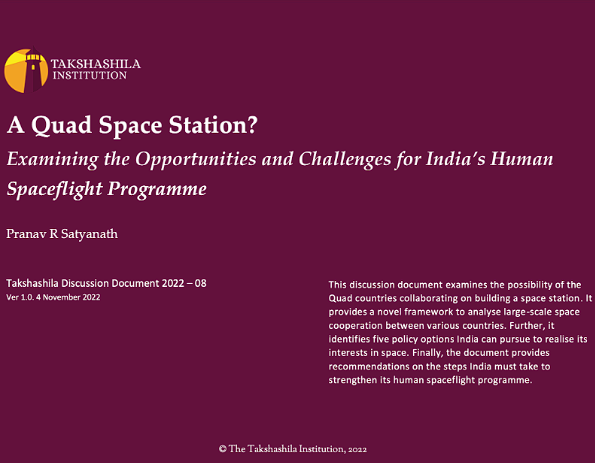On August 15, 2018, Prime Minister Narendra Modi announced the Gaganyaan programme, India’s first steps to making indigenous space flight a reality. As India comes closer to achieving its first ever human spaceflight effort, Prime Minister Modi has laid down yet another bold goal for the country — to build an Indian space station by 2035. Although the former chairman of ISRO Dr K Sivan, had contemplated the idea of a space station as a natural step after Gaganyaan, the goal was never set in stone.
India’s attempt to build a space station, even on a small scale, is certainly ambitious. However, taking the space station path could divert policymkers’ attention from addressing India’s more immediate challenge of substantially increasing the country’s satellite capacity, the Earth’s orbits and improving situational awareness in space. Moreover, in an attempt to pursue the construction of a fully indigenous space station, India might be closing its doors to gaining access to critical technologies and eschewing an opportunity to strengthen its relationship with like-minded partners. Therefore, a prudent move for India would be to build a space station with an experienced partner nation in order to leverage their expertise and maximise the diplomatic value of international collaboration.
In this context, a discussion document published by the Takshashila Institution in November 2022 examines the collaborative potential between the Quad countries, namely Australia, India, Japan and the United States. It compares each Quad member’s space policy priorities, technological capabilities and the degree of past cooperation to assess the modality of space station collaboration. The analyses point to the following findings:
- India, Japan and Australia share a strong collaborating potential. In this arrangement, India and Japan can be symmetric partners. Australia, in this case, can contribute to the project as a minor partner.
- The potential for collaboration with the U.S. is low, as it prioritises its space policy to reach the Moon and beyond. However, India might collaborate with private players in the US who play a prominent role in the development of space stations.
- India can collaborate with other partners, such as European spacefaring countries. On the other hand, India might build a space station indigenously without the help of foreign partners. This option, however, would be expensive and impose opportunity costs on the country.
- Finally, India can forgo the construction of a space station entirely. In this case, India can continue its human spaceflight programme by purchasing commercial services from other entities.
While the document exclusively examines the collaborative potential between Quad countries, India could explore other avenues of cooperation. These modalities are explored in greater detail in the document.
Pranav R Satynath is currently a Research Associate at the Council for Strategic and Defense Research (CSDR). The opinion expressed here is strictly personal.





